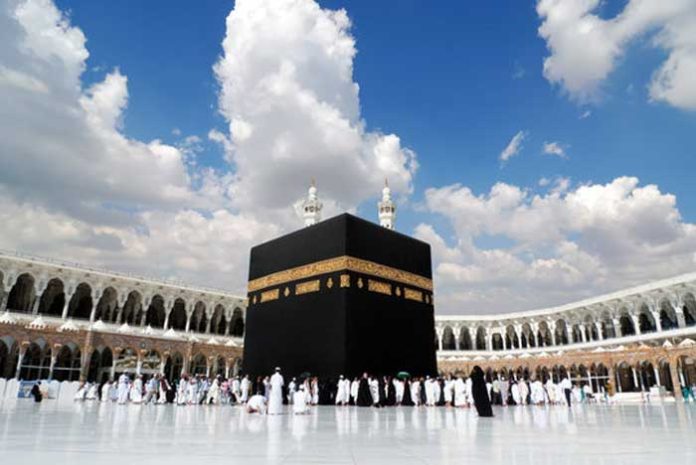Mufti Saad Abdul Razzaq
The commencement of the journey: Before embarking on this journey, Rasulullah SAAW instructed regarding the designated boundaries (Meeqaat), as narrated by Ibn e Majah on the authority of Sayyiduna Jabir R.A that Rasulullah SAAW said:
‘The people of Madinah are to assume Ihram from Zul Hulayfah, the people of Al-Sham from Al-Juhfa, the people of Yemen from Yalamlam, the people of Najd from Qarn, and the people of the East from their respective tribes.’
(Sunan Ibn e Majah – Hadith No.2915, p.317)
Additionally, in Sahih al-Bukhari, Sayyiduna Ibn Umar R.A narrates the following:
A man stood up and asked the Nabi of Allah SAAW ‘From where should we enter Ihram for Hajj?” Rasulullah SAAW replied that the people of Madinah should do so from Zul Hulayfah …
(Sahih al-Bukhari – Hadith No. 133, p. 61)
Prior to departure, he appointed Sayyiduna Abu Dujaana R.A and possibly Sayyiduna Saba’ bin Arfata R.A as his deputies in Madinah. (Seerat Ibn Hisham, p. 601 V2)
Setting out from Madinah via al-Shajarah during the day, a significant location linked with the birth of Muhammad bin Abu Bakr R.A, the son of Hadhrat Abu Bakr R.A, from the womb of Hadhrat Asma bint Umays R.A. It was marked by an acacia tree situated six miles away from Madinah and it was common for the Nabi of Allah SAAW to stop there for purposes of adorning his Ihram.
(Mu’jam al-Buldaan, p. 325, vol. 3)
They departed from Madinah Munawwarah on a Saturday after Zuhr, either on the 24th or as per the preferred opinion on the 25th of Zul Qa’dah. There were 29 days in that particular month and the first of Zul Hijjah was a Thursday. The Nabi of Allah SAAW reached Makkah Mukarramah four days later on Sunday the 4th of Zul Hijjah; and the 9th of Zul-Hajj i.e. the day of Arafat, fell on a Friday. (Al Bidayah Wan Nihayah, p. 414, vol. 11)
Before departing from Madinah, Rasulullah SAAW performed four Rak’aat of the Zuhr prayer and delivered a sermon, guiding the people regarding the regulations of Ihram. This occurred during the 10th year of the Hijra. Rasulullah SAAW was dressed in humble attire, his blessed hair neatly brushed, and oil applied. Upon leaving Madinah Munawwarah, he halted at Zul-Hulayfah to establish camp.
Staying at Zul Hulayfah
Zul Hulayfah is located about eight or nine kilometres from Madinah Munawwarah. Nowadays, it is commonly known as Be’er Ali, and the entire area is referred to as Wadi e Aqeeq.
Upon his arrival at Zul Hulayfah, Rasulullah SAAW prayed two Rak’aat of the Asr. He then performed the Maghrib and Isha there, spending the night at this location. The following day, he also performed the Fajr and Zuhr there. All the noble wives (Ummahat ul Mu’mineen) R.A of Rasulullah SAAW were also on this journey with him. At night he visited all his wives and thereafter Rasulullah SAAW took a bath.
Later, when he decided to enter into the state of Ihram, he performed a separate Ghusl. During this ritual, he used soap and applied perfume to his blessed body. Umm ul Mu’mineen, Sayyidatuna Ayesha R.A applied fragrance with her own hands upon Rasulullah SAAW, which was emanating from his blessed hair and beard.
(Sahih al-Bukhari – Hadith No. 1464, 1465, p. 558)
Additionally, Rasulullah SAAW performed Talbeed. This act refers to the application of a special resin to the hair so that it neatens the hair, and it does not remain untidy or attract any form of lice etc. Thereafter, Rasulullah SAAW donned the two sheets of the Ihram and performed two Raka’at Salat.
There are differing opinions as to whether these two Rak’aat were either for Zuhr or Nafil for Ihram. Rasulullah SAAW made intention for both Hajj and Umrah, as if Rasulullah SAAW was entering into the state of Ihram for the Qiran Hajj.
Ikramah R.A narrates that he heard from Abdullah ibn Abbas R.A, who mentioned hearing it from Umar R.A, who in turn stated that he heard it from Rasulullah SAAW, while they were in Wadi al-Aqeeq that an angel from his Rabb had appeared to him during the night and instructed him to pray in this blessed valley. Furthermore, the angel conveyed the message that Umrah had been included as part of the rites of Hajj.
(Sahih al-Bukhari, Hadith No. 1461, pg. 557)





